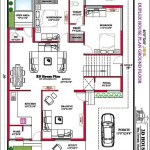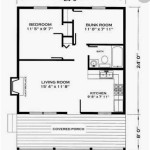Essential Aspects of Affordable Housing Planning Permission
In many areas, the shortage of affordable housing is a serious problem. This scarcity has several negative effects, including overcrowding, homelessness, and poverty. Consequently, there is a growing consensus that affordable housing should be a top governmental priority.
Well-planned affordable housing developments can also contribute to urban regeneration, create jobs, and foster community inclusion. However, achieving planning permission for affordable housing can be challenging, as there are a number of factors that need to be taken into account.
Here are some key aspects of affordable housing planning permission that developers and local authorities should consider:
1. Identifying a Suitable Site
The first step is to identify a suitable site for an affordable housing development. The site should be well-located, with good access to public transportation, schools, and other amenities. It should also be large enough to accommodate the proposed development, and it should not be located in an area that is at risk of flooding or other natural hazards.
2. Engaging with the Local Community
It is important to engage with the local community early in the planning process. This will help to identify any concerns that residents may have about the proposed development and to address them accordingly. It is also important to keep the community informed of progress throughout the planning process.
3. Ensuring Affordability
One of the most important aspects of affordable housing planning permission is to ensure that the proposed development is actually affordable. This means setting rents or sale prices that are within the reach of low-income households. There are a number of ways to achieve affordability, such as using government subsidies, providing tax breaks for affordable housing developers, or requiring developers to build a certain percentage of affordable units in their developments.
4. Meeting Planning Requirements
In order to obtain planning permission, developers must meet all of the relevant planning requirements. These requirements may include providing a certain number of parking spaces, meeting energy efficiency standards, and complying with local design guidelines. It is important to work closely with the local planning authority to ensure that the proposed development meets all of the necessary requirements.
5. Submitting a Planning Application
Once the developer has completed the necessary planning work, they can submit a planning application to the local planning authority. The application will include a detailed description of the proposed development, as well as a number of supporting documents, such as a traffic impact assessment and an environmental impact assessment. The local planning authority will then review the application and make a decision on whether to grant planning permission.
6. Appealing a Planning Decision
If the local planning authority refuses to grant planning permission, the developer can appeal the decision to the Planning Inspectorate. The Planning Inspectorate will then hold a public inquiry and make a final decision on whether to grant planning permission.
The process of obtaining planning permission for affordable housing can be complex and time-consuming. However, by following these steps, developers can increase their chances of success.

Part V Changes Affordable Housing Act 2024 Fhp

Permission Granted For Affordable Housing Pdg Architects

Planning Permission Granted For 16 Affordable Homes

Planning Permission Granted For 10 New Affordable Homes In Huntington Yorkmix

Planning Success Affordable Housing Murton Co Durham

Affordable Housing In Superior Boulder County

Inclusionary Affordable Housing Program Sf Planning

Affordable Housing And Mix

Planning Permission Granted For 781 Home Redevelopment In London Ctbuh

Affordable Housing Ion On The Rise Los Angeles City Planning








